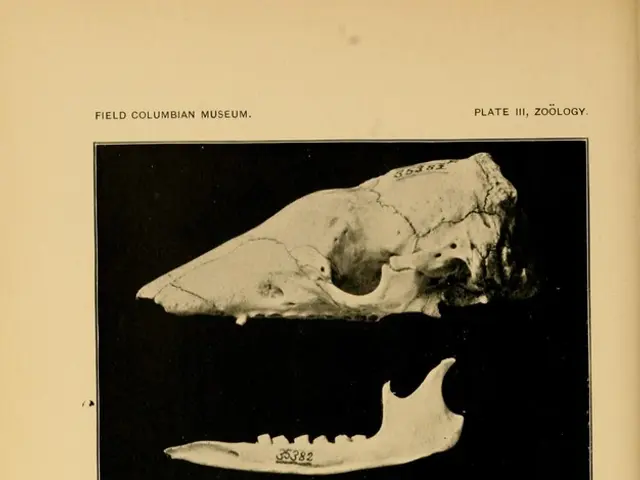Do Trees Possess a Form of Memory? Examining the Field of Arboreal Neurobiology and the Concept of Forest Wisdom
In a groundbreaking shift in scientific understanding, researchers are increasingly recognizing that trees and other plants display behaviors that mimic memory, challenging long-held beliefs about the intelligence of these organisms. This evolution in thought stems from the study of plant neurobiology, a field that explores plants' capacity to perceive and respond to environmental stimuli.
While plants may not possess brains structurally similar to animals, they have been found to process information about their environment in unique ways. These responses to stimuli can result in long-lasting changes in behavior or physiology, a characteristic of memory.
Pioneering research in this area reveals that plants can adapt to environmental stressors such as drought or disease, "remembering" these events and enhancing their resilience in future encounters. This phenomenon, known as stress memory, is crucial for a plant's survival.
One of the key mechanisms driving this memory is epigenetics, a process that alters gene expression without changing the actual DNA sequence. Through epigenetic modifications, a plant can adjust its response to stressors, thus adapting more effectively in the face of similar conditions in the future.
For instance, a plant might add methyl groups to specific parts of its DNA, silencing certain genes, or rearrange its chromatin structure to make certain genes more or less accessible. These changes can persist over long periods and, in some cases, even be inherited, providing the next generation with an adaptive advantage.
Research has shown that model plant species like Arabidopsis thaliana exhibit epigenetic changes after repeated exposure to drought, enhancing the plant's ability to conserve water. Similarly, Scots pine growing in dry, nutrient-poor soils express different immune-related genes than those in moist environments.
Some plant species have been shown to "remember" the temperatures experienced by their seeds, which influences when they flower, even months later. This finding suggests that plants possess a form of memory that enables them to adapt to their environment, navigating and thriving more effectively.
In essence, a tree could be regarded as a living encyclopedia of environmental experiences, helping it not only to survive but to live wisely. This newfound understanding of plant memory transforms our perception of the botanical world, revealing a complex and adaptive network of responses to environmental stimuli.
References:[1] Hrihui, P. et al. (2015). Epigenetic plasticy in plant development and response to biotic and abiotic stress. Journal of Integrative Plant Biology, 57(5), 622-637.[2] Liu, G. et al. (2020). Integrating plant internal and external navigation cues. Trends in Plant Science, 25(6), 529-541.[3] Palmieri, S. et al. (2018). Epigenetic persistence of plant developmental memory. Current Opinion in Plant Biology, 49, 93-98.[4] Ogasawara, K. et al. (2018). Climate change induces remarkable shifts in plant phenology, niche, and traits under herbivory and across the migratory range. Global Change Biology, 24(2), 580-596.[5] Cheng, H. & Chavarria-Miranda, J. (2007). Plant navigation responses to environmental cues. Trends in Plant Science, 12(11), 535-544.
Science unveils a fascinating discovery in the botanical world as trees and plants exhibit behaviors that mimic memory, challenging long-held beliefs about their intelligence. This revelation stems from the exploration of plant neurobiology, a field investigating plants' ability to perceive and respond to environmental stimuli.
Lack of a brain structure similar to animals hasn't hindered these organisms from processing information about their environs in unique ways. The results can manifest as long-lasting changes in behavior or physiology, characteristics of memory.
Furthermore, research presents evidence that plants can adapt to environmental stressors such as drought or disease, "remembering" these events to enhance their resilience in future encounters. This phenomenon, referred to as stress memory, plays a significant role in a plant's survival.
Innovative research in this area uncovers that epigenetics, a process modifying gene expression without altering DNA sequence, is a key driver behind this memory. Through epigenetic modifications, plants adjust their response to stressors, thereby showing adaptability.
For example, a plant might add methyl groups to specific DNA parts, silencing certain genes, or rearrange its chromatin structure to make certain genes more or less accessible. These alterations can persist over prolonged periods and, in some instances, even be passed on, offering the next generation with an adaptive advantage.
Scientific studies have established that model plant species like Arabidopsis thaliana display epigenetic changes after repeated exposure to drought, improving the plant's water-conservation abilities. Similarly, Scots pine growing in dry, nutrient-sparse soils express different immune-related genes than those growing in moist environments.
Some plant species have been found to "remember" the temperatures experienced by their seeds, affecting their flowering times months later. This finding signifies that plants possess a form of memory that enables them to adapt to their environment, navigating and thriving more effectively.
A tree could thus be considered a living encyclopedia of environmental experiences, assisting it not only to survive but to live wisely. This fresh perspective on plant memory transforms our understanding of the botanical world, revealing a complex and adaptive network of responses to environmental stimuli.
Embracing lifestyle modifications, such as improving workplace wellness, health and wellness, fitness and exercise, skin care, mental health, and nutrition, can contribute to an individual's overall well-being. Climate change, an urgent matter of concern, warrants attention and collaborative efforts from all sectors, including environmental science, to mitigate its effects.
Mens' health and women's health are equally vital topics, requiring comprehensive understanding and effective therapies and treatments. In the realm of sexual health, open discussions encourage responsible decision-making and practices. With aging comes an increase in weight management and parenting challenges, necessitating knowledge about healthy food and drink options, home and garden care, and the benefits of fashion-and-beauty products.
Data and cloud computing, and technology have revolutionized industries, facilitating seamless communication, efficient processes, and innovative solutions. Relationships with friends, family, pets, and significant others are enriched through these advancements.
Travel broadens horizons, fostering cultural understanding, and personal growth, while sports provide a platform for camaraderie, exercise, and teamwork. Admired sports like football, baseball, hockey, golf, tennis, and various European leagues, including basketball, MLB, NHL, racing, premier-league, and basketball, have captivated audiences for generations.
Amateur sports fans may revel in the excitement of sports-betting, relishing the adrenaline and possibilities presented by the diverse European leagues, MLB, NBA, NHL, andmore. The rapids and tails of horse-racing embody the primacy of traditional athletic events and present unique betting opportunities.
Abandoning misperceptions about plant life can foster newfangled methods to combat climate change and promote a harmonious coexistence with nature. Cultivating a nuanced understanding of the intricate extensions of environmental science, lifestyle, and technology can pave the way towards a sustainable and balanced future.
In conclusion, embracing the knowledge that plants demonstrate behaviors that mimic memory encourages us to reevaluate our relationship with the natural world. This insight underscores the importance of maintaining a balance between human activities and the environment, preserving Earth's habitats for future generations while fostering growth and advancement through improved technologies and understanding.








